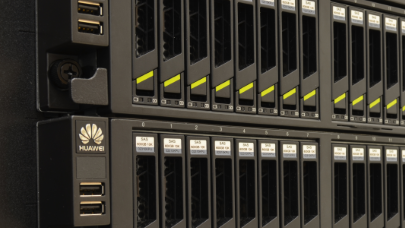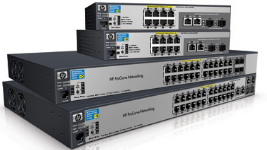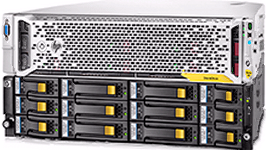Through the API Composable Infrastructure and Redfish, HP offers the industry to become a partner to reinvent the business infrastructure of tomorrow.
In an exclusive interview during her visit to Paris, Barbara Adey. HP vice president in charge of the Converged Infrastructure business unit detailed the fundamentals of hp’s composable Infrastructure initiative which she unveiled at the HP Discover conference in Las Vegas last June.
Over the past five years, it became clear that applications are the engine of our digital economy. The pressing question remains, how can companies migrate applications that sustain the businesses to the new generation of applications that determine the future of these companies? Hence, the need for a new class of infrastructure built to support future business needs quickly became a reality.
HP believes that this new infrastructure design will be “Composable”, i.e. built on flexble and powerful pools of compute, storage and network, broken down so they can be quickly integrated, decomposed and recomposed in an on-demand software model to meet the specific needs of a given application or workload. More importantly, HP is developing this new infrastructure design class from existing solutions without requiring a new architecture.
HPC Review: You have unveiled the composable infrastructure initiative at the recent Discover hp in the month of June. What is it about?
Barbara Adey: this is a new approach to anticipate and develop tomorrow’s infrastructure. Our focus is on business CIOs and administrators, but also the datacenters that have everything to gain in improving their infrastructure responsiveness. Our operational focus is twofold. The first concerns the company’s applications, which currently suffer from a lack of flexibility, even so when designed for the cloud. The second aspect that has focused all our attention was to ‘thin’ all the elements that make up the infrastructure of the company as of datacenter. That is, compute resources, disk and network.
HPC: What is the purpose of your initiative Composable Infrastructure?
BA: The objective is to provide a form of business agility to companies that need to transform their business to more flexibility and responsiveness, by providing infrastructure to a form of intelligence that is currently lacking. To speed the path to this new class of infrastructure, HP has developed a Composable Infrastructure API that manufacturers make available to its partners through the HP Composable Infrastructure Partner dedicated program. The combination of both will allow the initial automation and orchestration tools to be integrated with current infrastructure. Among the partners that have already confirmed their engagement are Chief Software, Docker, Puppet Labs, Ansible, and VMware. In dealing with the physical infrastructure in the form of API commands, software vendors and developers can control their infrastructure to build new workflows with the HP Composable infrastructure. This single open API is integrated natively in HP OneView, which automates provisioning, configuration and monitoring of the HP infrastructure. By integrating HP Composable API, software vendors can provide solutions that enable customers to reduce the time spent managing their environments. By providing interoperability with this API, software vendors can support customer requirements for traditional IT environments and the digital economy growing rapidly. It should be noted that beyond the HP equipment, the initiative aims to eventually cover third party infrastructure elements.
HPC: Can you detail us the expanse and functional benefits of the Composable Infrastructure Partner Program?
BA: The continuous supply of applications and services required by the new business models requires a rule-based automation for both applications and infrastructure through development, testing and production activities. HP’s Composable API enables integration into automation tools for Test / Dev and Production to drive a more aligned and responsive delivery of IT services to meet the needs of businesses. The HP Infrastructure Composable partnership program which is part of HP Alliance One, provides a set of tools and resources that enable software vendors and developers to create interoperability between HP OneView and other software for access programmatic infrastructure. Access to the program is available to all members of the Alliance One. As the initiative continues to unfold in the coming quarters, we look forward to bringing new partners on board and support our customers as they embrace a new style of infrastructure to meet their changing business needs.
HPC: How is this Composable Infrastructure initiative compatible with developments in SDS and SDN from hp?
BA: Our SDS and SDN developments rely on material resources which constitute the company’s infrastructure. They are fully complementary, since the management layer and the intelligence-aware related Composable Infrastructure API determine the allocation of resources and bandwidth required by applications and virtualized business environments. The set provides administrators the required tools to simplify and automate the allocation but also the release of resources based on application requirements. Let us not forget that one of the growing criticism against the current infrastructure is the waste of resources induced by allocating resources that are no longer in use, but continue to function (called overprovisioning). A simple six month timeout will allow administrators to keep an eye on their resource consumption, and thereby reduce investment by adjusting the resources in line with the actual needs of the business with a high level of granularity. From this point of view the operation as a unified pool has its meaning.
HPC: Can you tell us more about Redfish, which HP helped to make it an industry standard?
BA: Redfish is an emerging industry specification for the management of the datacenter for customers who require independent interfaces of suppliers, based on light and modern paradigms llike REST. The objective is to realize the benefits such as improved scalability and security. Redfish is for companies considering modern approaches of data center management software.
HP Dell, Emerson and Intel have come together with the intention of establishing Redfish as industry standard to facilitate the transition of clients to servers defined by software and thus make it compatible with the new requirements of Conduct activity based on an agile and responsive IT. The design of Redfish around the REST API is in line with HP’s strategic plans for the management of the data center.
Standardization of data center management can reduce costs, improve security and productivity. Redfish uses modern REST based interface to improve and expand access to data and analysis, system-to-system communication, remote management, security features and scalability. This specification eliminates the need to know protocols and use tools specific software environments of data centers and server management.
HPC: Finally, can you detail the upcoming strategic developments aimed at enterprise infrastructure and data centers?
BA: Certainly. We have already defined the four steps ahead. The first is devoting a unified API, and is at the heart of our Composable Infrastructure initiative. The second initiative is to make available to our customers new infrastructure natively compatible with this API. Our third objective is to help to ensure continued provision of services. Finally, we also intend to build on the progress made on The Machine to integrate our infrastructure development strategy in the coming years. One could imagine the elements of a whole new genre to accelerate infrastructure performance, like datacenter-ready ultrafast memristor memory filled integrated enclosures… but we’re not there yet.
Barbara Adey is Vice President Business Develoment Converged Datacenter Infrastructure (CDI), HP. Her role is to generate revenue, market share and margins. Before joining HP in January 2014, Barbara Adey was senior director of product management in the Security Technology Group at Cisco Systems. She was head of operations for the wireless routing group, security and Cisco, and previously worked in business and sales strategy. Barbara started her career in software development at Nortel Networks and has held marketing and consulting positions.
© HPC Today 2024 - All rights reserved.
Thank you for reading HPC Today.

































